I Ain't Lion
Hamukungu Village, Uganda
Barking Up the Wrong Tree: The Rare Tree Climbing Lions of Uganda
Before any of you pedants start crying out in delight, thinking you’ve caught my egregious blunder, let me clarify that I do not believe this to be a rare spotted lion in a tree. I know this is a leopard, calm down and read the story.
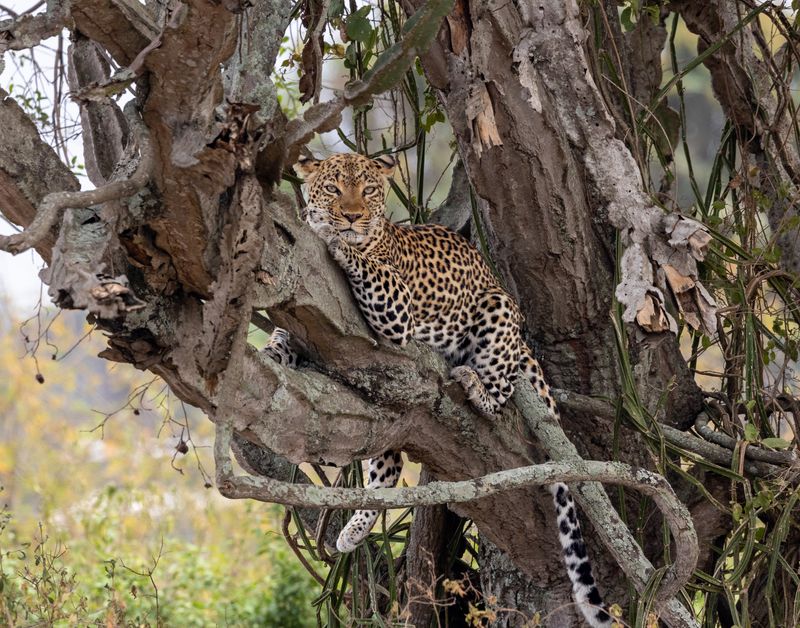
**************************
There was little I could do about the newly enacted ANTI-GAY LEGISLATION IN UGANDA. Other than just worrying about it and stewing over it, unless I was prepared to cancel my trip, it was entirely out of my control.
What I could do, however, is spend my time constructively, by trying to learn as much as possible about the animals I’d soon be photographing. This would be time well spent, especially since I had no intention whatsoever of canceling my visit to Uganda.
So, about a month prior to my departure, I began sitting down each night to a different NATIONAL GEOGRAPHIC documentary. The most memorable among them was a Nat Geo show about the rare, tree climbing lions of Uganda.
These unusual lions exist only in Uganda and nowhere else. Since I was scheduled to be in Uganda in just under four weeks, my excitement level was understandably off the charts. Maybe I’d get to meet some of the very lions in this video!!
The documentary went on to show beautiful footage of the Ugandan lions hanging out in the treetops, paired with interviews of hypothesizing scientists and documentarians. The fact that these particular lions like to be up in the trees, that much was indisputable; that’s just what they do. And yet, all the different zoologists couldn’t seem to agree on why these 400+ pound creatures hung out in trees, nor could they explain why they are the only ones in the entire world that do so.
So. Let me get this straight: These lions are fundamentally beautiful and rare, but they also display mysterious and unexplained behavior? And they only display this behavior in one small section of Uganda, the very same section I'm about to visit? My departure date simply could not come fast enough! These lions were beyond fascinating to me.
The rest of the documentary was all very sweet, and you get very attached to the beautiful lion family as they teach their four adorable cubs to climb the trees for the first time. Some of the cubs have trouble at first but overcome it; some are hungry but eventually get fed; some get lost, but eventually are found…
It was a tad contrived and a bit schmaltzy, but still, it made me super excited to see them in Africa, live, up close, and personal. Also, like all shows involving animals, at the intended cues I probably got a little emotional and may or may not have cried a wee bit. But everything worked out in the end, and all the cubs learned to climb the trees. It was expected, but beautiful.
My educational and uplifting show for the evening was winding down…wrapping up… when — out of nowhere, at the very end— they added a 2-3 minute addendum informing us that,
“shortly after filming, THE LOCAL PEOPLE KILLED AND SLAUGHTERED THE ENTIRE LION FAMILY AND ALL THE CUBS.”
THE END.
Wtf?!?!
Are you f*cking kidding me?! I wasn’t just upset that it happened, I was more upset because it caught me completely off guard! Up until this point— these last three minutes— this just hadn’t been that type of show!
Give me a little warning, Nat Geo! Aren't you owned by Disney now!?
Remember how I just used the word “schmaltzy?” Well, you don’t finish off “schmaltzy” with a familicide, you don’t garnish “contrived” with a last-minute massacre!
And yet, suddenly here were all these people on my screen talking emotionally about how the entire family they’d been studying (and that we’d been watching for hours) were now all dead, murdered by the locals for killing their cattle.
And then the credits rolled. The End.
Well, I certainly wouldn’t be meeting any of those lions, now would I? They were all dead.
And suddenly, so was a good deal of my previous excitement. I spent most of the next week sullenly researching not Ugandan animals and their behavior, but instead researching the proximity of human civilizations to wild animal populations, and the most common conflicts that arise from the unfortunate proximity of these two habitats.
*****************************
When we got to Uganda, most of my excitement returned about seeing the tree climbing lions, and even though it was over a week away before we’d be in that specific geographic location, I began talking about them regularly.
Our guide overheard me and eventually pulled me aside.
“Ryan,” he said, “I don’t want to upset you, but you will most likely need to lower your expectations about seeing these lions you speak of. Many have been killed by local farmers as a retaliation for killing their cattle, plus, we are currently in a drought. The dwindling number of tree climbing lions means that on the day in question, we will most likely just drive around and see nothing... until you eventually grow tired and bored and agree to give up."
Then he added, "You know, less than two percent of all visitors ever actually get to see a tree climbing lion in Uganda.”
I don’t know if this was more of an anecdotal number, this “two percent”? An intentionally hyperbolic number spoken to prove a point? Or if it was a real statistical number based on some empirical evidence... but what was painfully clear was that the tree climbing lions were exceedingly scarce, and that it would take a small miracle for us to actually find one.
Well, when the date in question finally rolled around, a tree lion miracle was not in the cards for us. Not on that day, nor on any other; and as of this writing, I have still yet to meet or photograph any of these increasingly rare creatures.
However, sometimes when the Universe closes a door, it opens a window. Or rather, it takes away a lion and gives you a leopard:
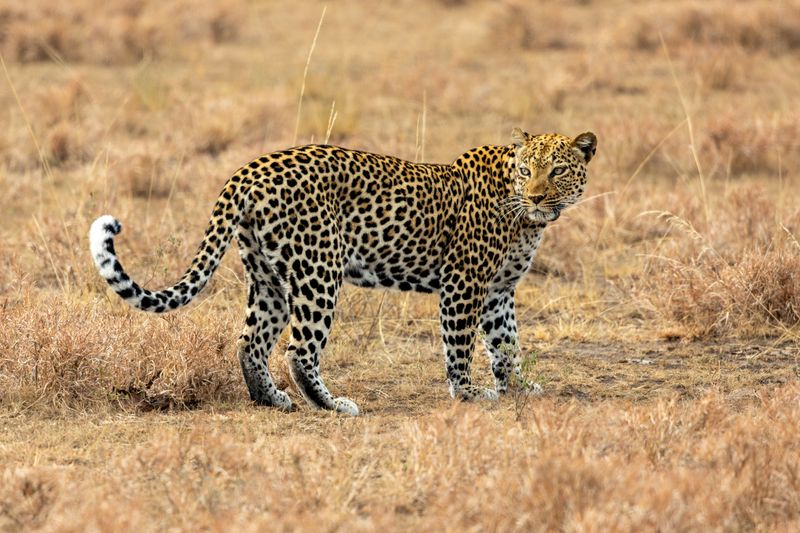
I had no plans or expectations to photograph a leopard in Uganda, and yet, as you can see, that’s exactly what I got.
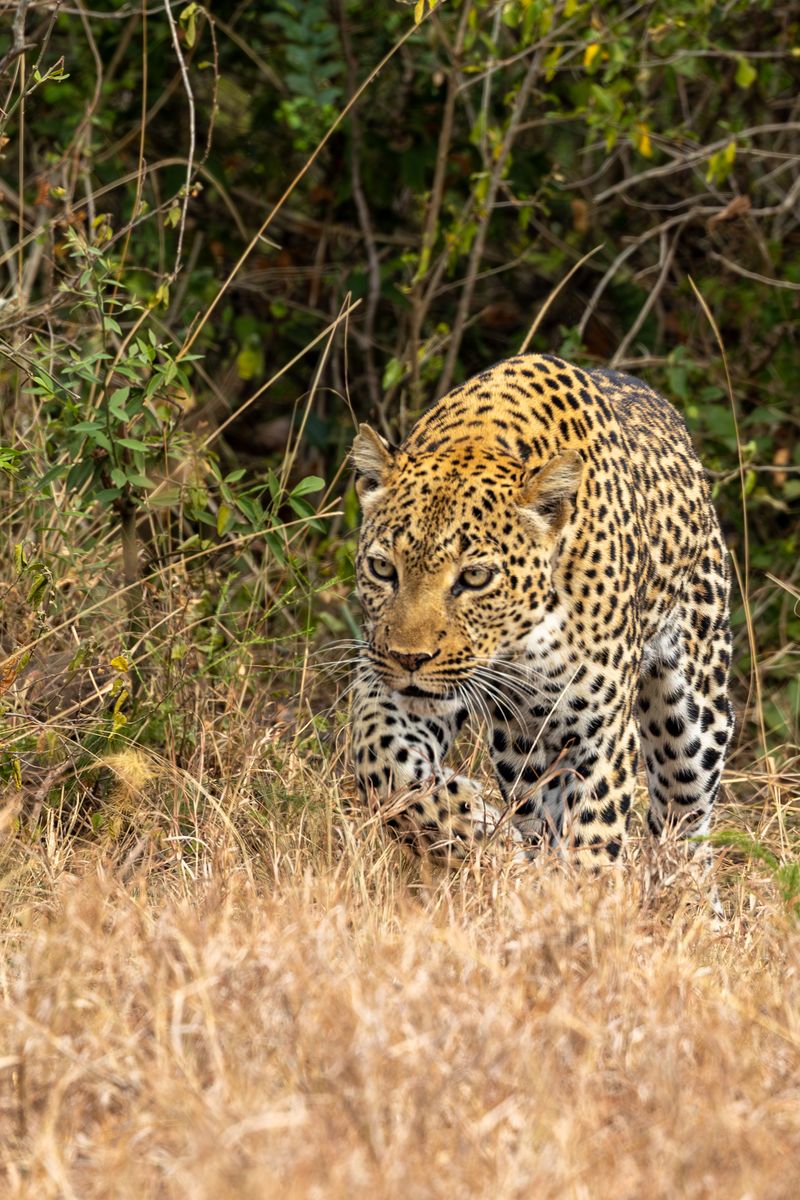
A true blessing, we happened on this leopard while it was stalking a warthog. The leopard was lithe and graceful and most likely hungry. I’m sure it didn’t consider US to be much of a blessing, though, as we disturbed its predatory game instantly and quite absolutely. We showed up in our loud and rambunctious vehicle, kicking up huge clouds of dust. At which point, the leopard abandoned all hope of stalking its prey and went and climbed up in a tree.
It seemed to be saying to me, “You want to photograph a big cat in a tree? FINE! I’ll give you that. Here. Is this what you want? Look. I’ll even make love to your camera with my eyes! But then will you please leave me alone? Let me get back to my hunting my lunch? Jeez.”
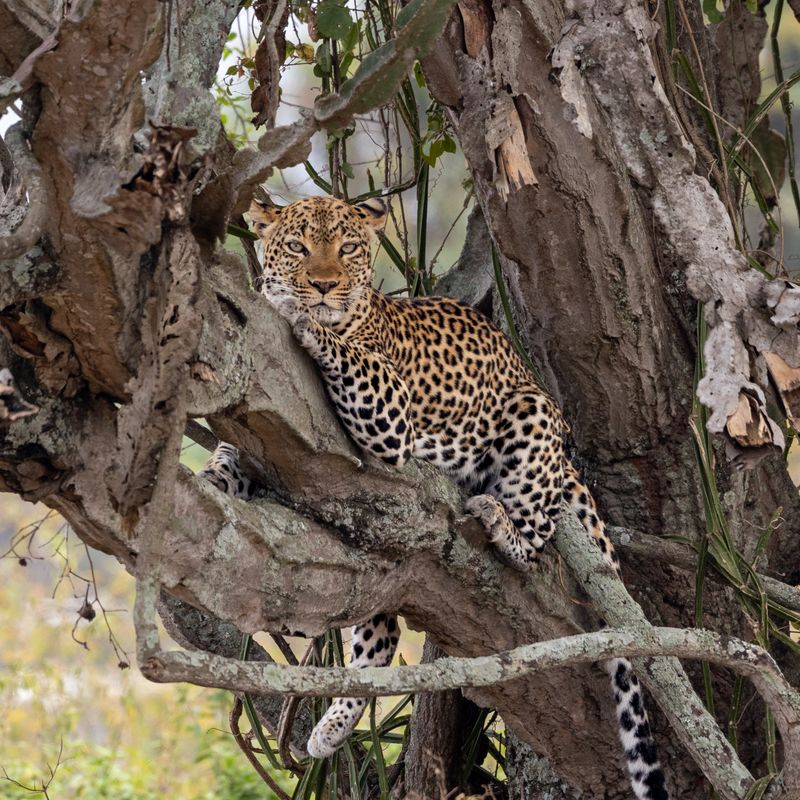
I think about this all the time, that the big predators of the savanna must have an increasingly difficult time hunting these days. They can be as sly and stealthy as they want, but by now all the prey animals must know exactly where they are— they just need to look for the caravan of Jeeps and the sound of rapid-fire camera shutters going off. The not-so-subtle throngs of animal paparazzi, if you will.
I imagine a warthog mom speaking to her warthog children, saying, “Look over there, kids, this is important. That’s where the big cat is, children, so stay alert. You can always tell a big cat is nearby because of the trail of Jeeps and photographers it leaves in its wake…”
“Well, mom, that should be quite easy to avoid, right? It’s not like all these loud photographers are very subtle, are they?”
“No. No they are not, children. We are very, very safe so long as they’re around.”
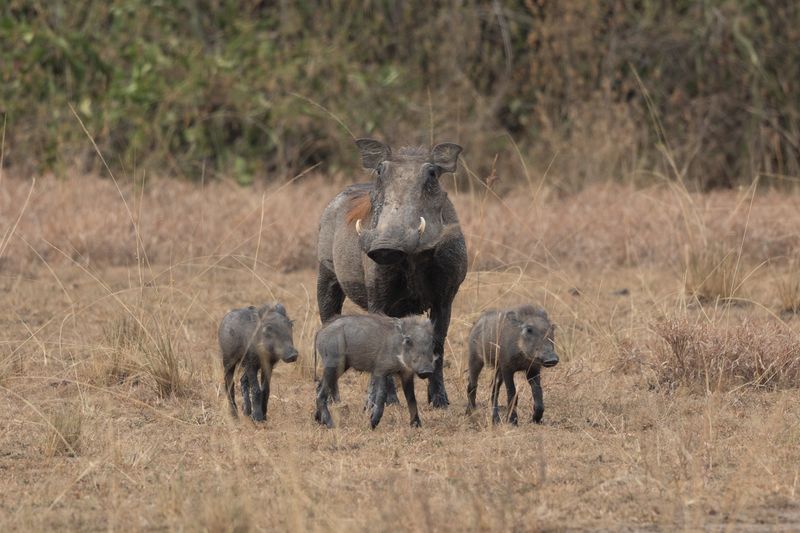
Not to end this on a sour note, but part of me wonders if that’s exactly how the locals knew where to find the tree climbing lions as well. It wouldn’t be that hard— just look for all the photographers in their safari vehicles, all pointing their cameras up at a tree.
I had been researching the proximity of animal populations to the indigenous locals, but what about us? What about ME, and all the other photographers and tourists in Uganda? Are we also part of the problem, maybe even THE MAIN PROBLEM?
It’s no wonder some of the predators are being forced to kill local cattle for food, every time they try to hunt an animal properly, the whole operation is ruined! How can they hunt when every day there’s a whole caravan of bumbling photographers in Jeeps following them around, trying to film the whole thing? It would be maddening!
All those months prior, after first watching the documentary, I was admittedly upset, and so all my online research was geared towards understanding the vengeful locals and addressing their problem of proximity; however, now that I’ve been to where the tree climbing lions of Uganda live, I’ve changed my tune.
I believe it’s possible I was barking up the wrong tree.
*********************************
Read HERE about an irritating woman, who liked everything about being on safari -- except having to constantly go and look at animals. I'm sure all the animals of the savanna would love it if more people shared her opinion and wished that safaris could just skip the whole "look at animals" part.